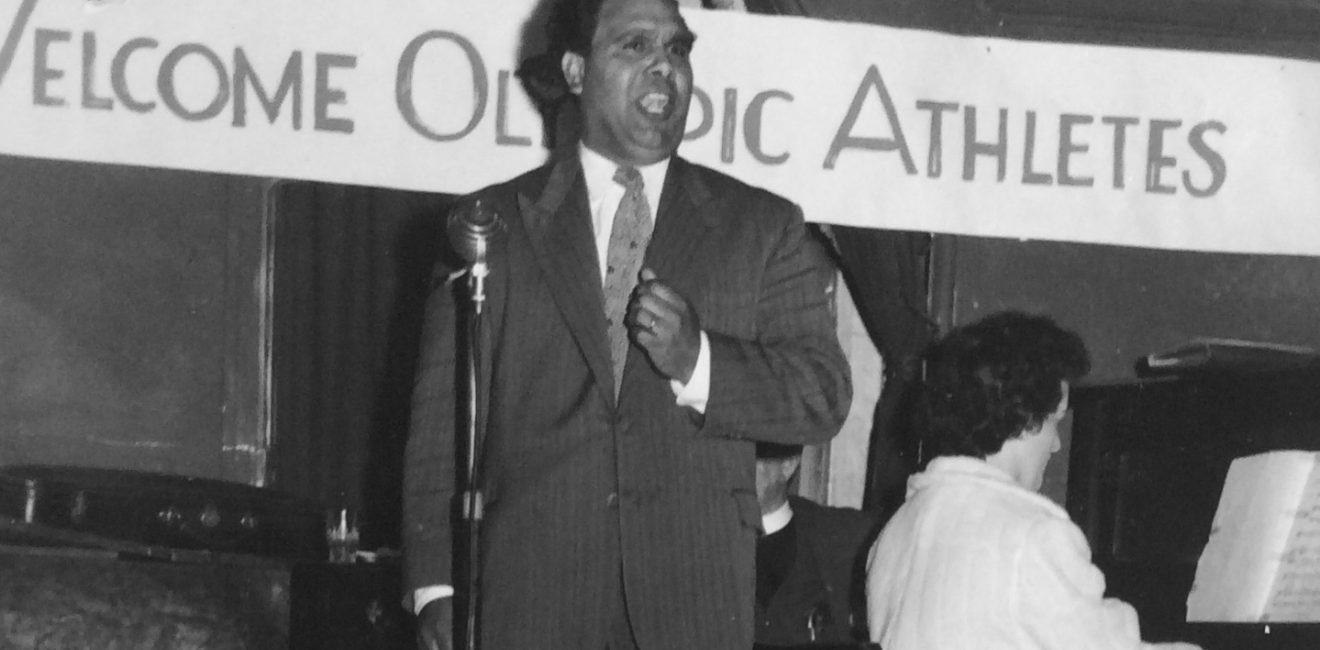PsyOps goes Rodent
Anti-Soviet Protests at the 1956 Melbourne Olympic Games

A blog of the History and Public Policy Program
Anti-Soviet Protests at the 1956 Melbourne Olympic Games

Anti-Soviet Protests at the 1956 Melbourne Olympic Games
One month after the start of the Hungarian Revolution, the 1956 Olympic Games began in Melbourne, forcing Soviet officials to work overtime to counter the impact of protests.
Soon after the Soviet team arrived in Melbourne, they faced street protests by local Hungarians. “The team here represents the butchers who are devastating our homeland,” said Sandor Hetyey, the secretary of the Australian-Hungarian Society.[i]
Rather than get into a fruitless debate, the Soviet team embarked on a charm offensive. Athletes threw boomerangs in front of TV cameras, exchanged gifts with Australian athletes, handed children chocolates outside the Olympic Village, and held a vodka party for the American team.
The Australian government also hoped to keep Cold War politics at bay, as it was determined to protect the reputation of the “friendly” Games.
For a while it looked like the charm offensive would work, but local Russian émigrés were keen to spoil this carefully constructed picture. The anti-communist newspaper, Unification, which was sold at the Olympic Village newsagency, provided Soviet athletes with a phone number to contact, should they wish to defect.[ii]
Russian anti-Communist groups decided to target Vladimir Kuts, who had won the 10,000 and 5,000 meters races in emphatic style and was being hailed as the “hero” of the Melbourne Olympics. Gavin Souter wrote in the Sydney Morning Herald that Kuts was certainly “the outstanding athlete of the 1956 Games,”[iii] and Peter Banfield in The Argus declared Kuts “man of the Games.”[iv] Even Bob Giegengack, assistant coach for the US track and field team, said, “Vladimir Kuts typified the spirit of Melbourne.”[v]
Having Kuts declared the unofficial “hero” of the Games was a propaganda coup for the USSR because it put a face to its superiority over the West.
With his high profile, Kuts was an obvious target for anti-Soviet groups, who approached him during the Games and asked whether he would defect. He rejected the invitation. After all, he knew that when he returned to the USSR he would be generously rewarded for his victories, and the Nikolai Romanov, chairman of the All-Union Soviet Sports Committee, had promised him a general’s pension if he could win both long distance races, which of course he did.[vi]
Having failed to woo Kuts, anti-Communist émigrés decided to embarrass him.
In researching my book, Cold War Games I came across a file from the Australian Security Intelligence Organisation (ASIO) that included a brief report that described a function held on 7 December at the Sydney Town Hall. The guest of honour was Kuts and the event was organised by the Australian Soviet Friendship Society. During the reception, Kuts and a small Soviet delegation were entertained by the renowned Aboriginal tenor, Harold Blair.
After the show, Kuts was led to a table where local comrades had left presents for the hero of the Olympics. As well as a boomerang and a stuffed koala there was a small box on the table, nicely wrapped and tied with a red ribbon. It was unclear who had placed it on the table. When Kuts opened the box it contained a dead rat covered in yellow paint. In this instance, the organisers were able to hush up what otherwise could have been an embarrassment had it been reported in the press.
However, there is a postscript to this episode. While the Soviets were anxious to keep news of this incident out of the Australian press, when the team returned home it became useful fodder for the Soviet propaganda machine for its domestic audience.
In an article published in Literaturnaya Gazeta on 2 April 1957 the incident was described, with some embellishments. The CIA was accused of being behind it. Rather than one rat, the number had increased to eight, and they were smeared with red, not yellow, paint. And the rats were scampering around, not immobilised by rigor mortis. “This savage, hooligan prank stirred all persons at this banquet with loathing towards the provocateurs,” reported the magazine.[vii]
This incident might be small, but part of a wider raft of psychological operations (PsyOps) that were conducted during the 1956 Olympics, making them, as I argue in my book, the first Cold War Games.
[i] “Games protests over Russia,” The Sun, 14 November 1956.
[ii] “Woos Soviet Team,” Sun Herald, 25 November 1956.
[iii] Gavin Souter, “Vladimir and his Friends,” Sydney Morning Herald, 29 November 1956, p. 2.
[iv] Peter Banfield, “How Kuts the Killer Broke Them – One by One,” The Argus, 29 November 1956, p. 20.
[v] Bruce Howard, 15 days in “56, Angus & Robertson: Sydney, 1995, p. 78.
[vi] VA Vlasenko, VV Kolotovkin, MA Rakitin, and EV Yakushina, Они прославили Россию Герои Олимпийских игр [The glorious Russian heroes of the Olympic Games], Ministry of Education and Science, Moscow 2009, p. 82.
[vii] N. Savin, “Неудачи Аллена Даллеса,” [Allen Dulles”s Failures], Literaturnaya Gazeta, 2 April 1957

The Cold War International History Project supports the full and prompt release of historical materials by governments on all sides of the Cold War. Read more



